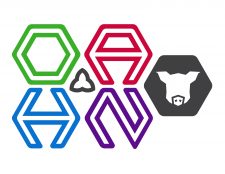OAHN Swine Network Project: Investigation of swine erysipelas

Investigating the increase of swine erysipelas as reported by several data sources compiled by the OAHN Swine network
Project Lead: Tim Pasma, Sue Burlatschenko
Collaborators: Durda Slavic, Jim Fairles, Josepha Delay (Animal Health Laboratory)
Andrew Vince, Manjusri Wijekoon (OMAFRA)
Kalena Statutiak, Guy Moser, Anna Pietruszkiewicz (Gallant Custom Laboratories)
Colleen Roehrig (Conestoga Meats)
Date: July, 2020
Since the fall of 2015, the OAHN Swine Network has noted an increase in activity of swine erysipelas, based on data from practitioners completing the quarterly survey and from provincial and federal slaughter plants. The purpose of this study was to isolate and, using whole genome sequencing (WGS), to characterize isolates of swine erysipelas from abattoirs and swine farms in Ontario. During 2019 tissue samples (e.g., lung and spleen) were collected from hogs in slaughterhouses and clinical cases in Ontario with lesions suspicious for swine erysipelas and submitted to Animal Health Laboratory (AHL) for culture. In total 8 cases were received comprising of 25 samples. Eleven samples were collected from clinical cases whereas 14 samples were from slaughterhouses. Only 6 isolates of Erysipelothrix rhusiopathiae were recovered from the samples submitted (3 from the clinical cases). To compensate for low number of isolates recovered, E. rhusiopathiae isolates conveniently archived by the AHL (5) and Gallant Custom Laboratories (3) were also included in the study bringing up the total number of isolates for sequencing to 14. Based on limited data available for each isolate it is likely that isolates originated from 11 different premises but that cannot be confirmed. Most of isolates sequenced were archived isolates recovered in 2015 (1), 2016 (2) and 2018 (5).
Isolates were sequenced on Illumina MiSeq using Nextera XT library preparation and MiSeq V2 (500 cycles) sequencing kits. Whole genome sequence data were used to detect the resistance genes, virulence genes and to establish MLST types of Ontario isolates.
To read the full report, click HERE

